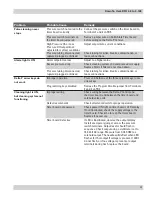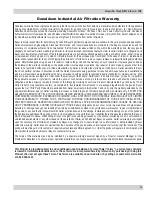
25
Donaldson Company, Inc.
1. Place 1/4-in diameter, rope-type sealant to the inside
of the transition’s bolt pattern.
2. Use 3/8-16 bolts, washers, and hex nuts to fasten
transition to hopper.
3. Determine the proper position required for the rotary
airlock. Allow clearance for electrical connections
and future maintenance.
4. Place 1/4-in diameter, rope-type sealant toward the
inside-edge of the airlock’s top flange.
5. Fasten the airlock to the transition flange using 3/8-
16 bolts, washers, and hex nuts.
6. Electrical connections must be made by a qualified
electrician. Refer to the motor’s nameplate for
voltage, amp rating, cycle, and wiring sequence.
Rotating blades can cause serious injury.
Turn power off and lock out all power before
performing service or maintenance work.
Keep hands, feet and loose clothing away from
both inlet and outlet openings to avoid injury or
damage when valve is operating.
Optional discharge devices may
require independent support.
Discharge devices over 800 lbs. must be
independently supported.
Rotary Valves are used to maintain a seal on the hopper
outlet while material is discharged from the hopper. A
transition allows a valve to be connected to the hopper
discharge when there is a size difference between the
hopper and the valve.
Rotary Valve and Transition
Rotary Valve and Transition
3/8-16 bolt
flat washer
1/4-in diameter
rope-type sealant
placed inside bolt pattern
flat washer
hex nut
hopper flange
transition
hex nut
flat washer
3/8-16 bolt
flat washer
rotary airlock
1/4-in diameter
rope-type sealant
placed inside bolt pattern



































